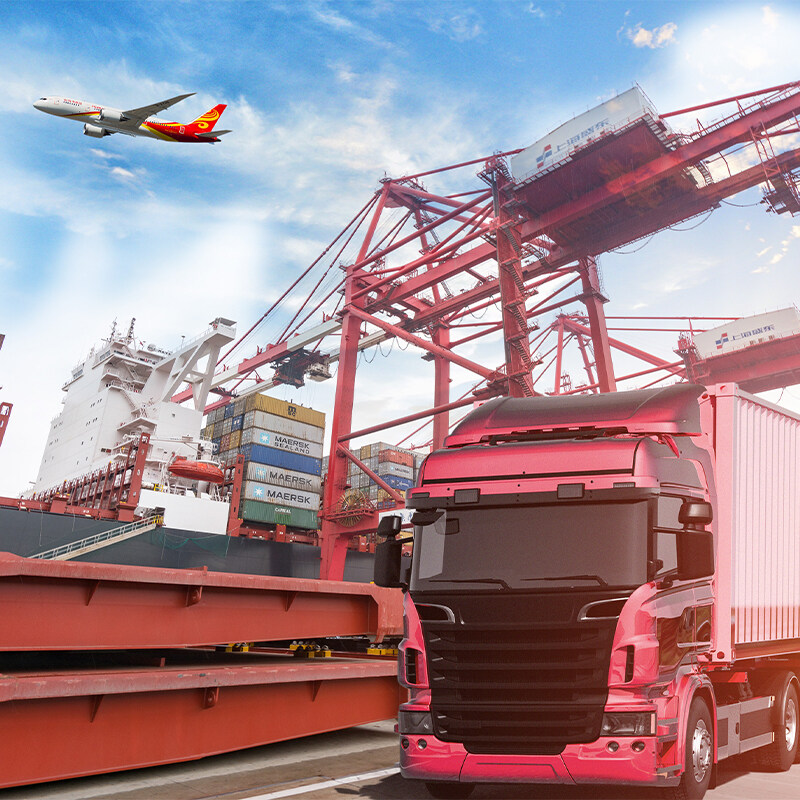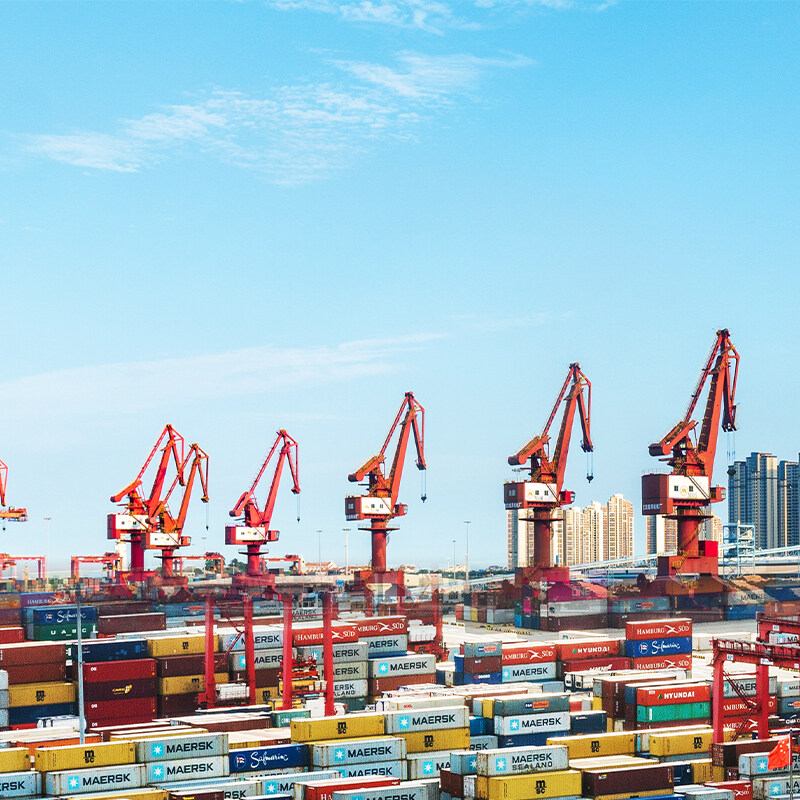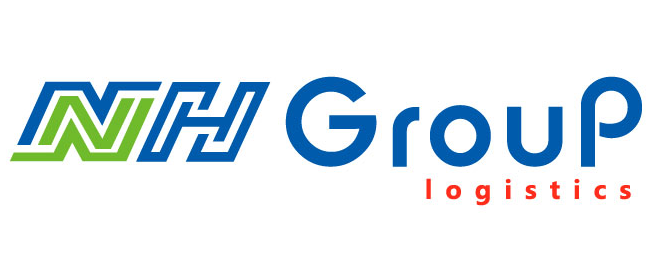Email format error
Email cannot be empty
Email already exists
6-20 characters(letters plus numbers only)
The password is inconsistent
Email format error
Email cannot be empty
Email does not exist
6-20 characters(letters plus numbers only)
The password is inconsistent

News
Here, you can describe a piece of text you want to express

China Dangerous Goods Declaration Sea Freight Forwarder Service
Handling dangerous goods demands precision, compliance, and expertise in the complex world of international shipping. This post explores the critical role of freight forwarders specializing in China Dangerous Goods Declaration services for sea freight. Discover how these professionals ensure the safe and efficient transportation of hazardous materials across oceans.
Understanding China Dangerous Goods Declaration: An Overview
The international transportation of dangerous goods is a highly regulated and intricate process, demanding meticulous attention to detail to ensure the safety of shipments, personnel, and the environment. China, as a major player in global trade, adheres to stringent regulations governing the declaration and transportation of dangerous goods.
1. Regulatory Framework:
China follows a comprehensive regulatory framework for the transportation of dangerous goods, aligning with international standards while addressing specific national considerations. The primary regulatory bodies include the General Administration of Customs (GAC) and the State Administration for Market Regulation (SAMR). These entities collaborate to establish guidelines and requirements that shippers, carriers, and freight forwarders must adhere to when dealing with hazardous materials.
2. Classification of Dangerous Goods:
Before initiating the transportation process, it is crucial to accurately classify the dangerous goods according to their specific characteristics. China adopts the United Nations' Globally Harmonized System of Classification and Labelling of Chemicals (GHS), which provides a standardized approach to classifying and labeling hazardous substances. Proper classification is fundamental to determining the appropriate packaging, labeling, and handling procedures throughout the supply chain.
3. Documentation Requirements:
China places significant emphasis on accurate and thorough documentation for dangerous goods shipments. The China Dangerous Goods Declaration, also known as the DG declaration, is a critical document that provides detailed information about the nature of the hazardous materials, their quantity, packaging, and emergency response procedures. Freight forwarders specializing in this area play a vital role in guiding businesses through the documentation process, ensuring compliance with both Chinese regulations and international standards.
4. Packaging and Labeling Standards:
Proper packaging and labeling are paramount when dealing with dangerous goods. China adheres to specific packaging requirements outlined by international organizations such as the International Maritime Dangerous Goods (IMDG) Code for sea freight. Freight forwarders specializing in China Dangerous Goods Declaration possess the expertise to advise on and oversee the correct packaging and labeling of hazardous materials, mitigating the risk of accidents during transportation.
5. Compliance with International Agreements:
China actively participates in international agreements and conventions related to the transportation of dangerous goods. These include the International Maritime Organization (IMO) conventions for sea freight and the International Civil Aviation Organization (ICAO) standards for air freight. Compliance with these agreements ensures a harmonized approach to the movement of dangerous goods, promoting global safety standards and facilitating cross-border trade.
6. Role of Freight Forwarders:
Freight forwarders specializing in China Dangerous Goods Declaration act as invaluable partners for businesses navigating the complexities of international shipping. Their expertise encompasses understanding and interpreting the regulatory landscape, assisting with proper classification and documentation, and ensuring that shipments comply with the specific requirements of both China and the destination country.
Why Choose Sea Freight for Dangerous Goods?
Choosing the appropriate mode of transportation for dangerous goods is a critical decision that significantly impacts the safety, cost, and efficiency of shipments. When it comes to transporting hazardous materials from China, sea freight emerges as a preferred choice for several compelling reasons.
1. Cost-Effectiveness:
Sea freight is often more cost-effective than other modes of transportation, especially when dealing with large volumes of dangerous goods. The economies of scale associated with shipping containers allow businesses to consolidate shipments, reducing the overall cost per unit. This cost advantage becomes particularly relevant for companies dealing with bulk quantities of hazardous materials.
2. Capacity for Various Types of Dangerous Goods:
Sea freight accommodates a wide range of dangerous goods, from flammable liquids to corrosive substances. Containers used for sea freight are designed to meet stringent safety standards, providing a secure environment for the transportation of hazardous materials. This versatility makes sea freight an attractive option for businesses dealing with diverse categories of dangerous goods.
3. Reduced Risk of Accidents:
Compared to air transportation, sea freight presents a lower risk of accidents and incidents during the transit of dangerous goods. Sea vessels are equipped with advanced safety features, and the controlled environment of a container minimizes the likelihood of external factors impacting the cargo. This inherent stability makes sea freight a reliable choice for businesses seeking to mitigate the risks associated with transporting hazardous materials.
4. Compliance with International Regulations:
Sea freight aligns well with international regulations governing the transportation of dangerous goods. The International Maritime Dangerous Goods (IMDG) Code sets the standard for the safe transport of hazardous materials by sea. Freight forwarders specializing in dangerous goods declaration for sea freight are well-versed in these regulations, ensuring that shipments comply with both Chinese and international standards.
5. Reduced Environmental Impact:
Sea freight is considered a more environmentally friendly mode of transportation compared to air freight. The carbon footprint associated with shipping goods by sea is generally lower, making it a sustainable choice for businesses concerned about their environmental impact. This consideration aligns with the growing emphasis on sustainable and eco-friendly practices in global supply chain management.
6. Flexibility in Shipping Volumes:
Sea freight offers flexibility in shipping volumes, allowing businesses to transport large quantities of dangerous goods in a single shipment. This flexibility is particularly advantageous for industries with high production volumes or those dealing with seasonal fluctuations in demand. Sea freight enables businesses to optimize their shipping strategy based on the scale of their operations.
7. Comprehensive Shipping Routes:
Sea freight provides access to a comprehensive network of shipping routes, connecting major ports worldwide. This extensive reach allows businesses to access diverse markets and streamline their global distribution network. For companies expanding their presence in different regions, sea freight offers a reliable and well-established infrastructure for transporting dangerous goods.
China Dangerous Goods Declaration: Step-by-Step Process
Navigating the process of declaring and transporting dangerous goods from China involves a series of meticulous steps to ensure compliance with international regulations and the safe handling of hazardous materials. Below is a comprehensive step-by-step guide outlining the key stages of the China Dangerous Goods Declaration process for sea freight:
1. Classification of Dangerous Goods:
The process begins with accurately classifying the dangerous goods according to international standards, such as those outlined in the International Maritime Dangerous Goods (IMDG) Code. Freight forwarders work closely with shippers to determine the nature of the hazardous materials and assign them to the appropriate hazard class, category, and packing group.
2. Selection of Proper Packaging:
Based on the classification, freight forwarders advise on the proper packaging materials and techniques to ensure the safe containment of dangerous goods during transportation. This step is crucial for preventing leaks, spills, and reactions between incompatible substances. Compliance with packaging standards set by international organizations is a key consideration.
3. Labeling and Marking:
Freight forwarders oversee the correct labeling and marking of packages containing dangerous goods. This includes affixing hazard labels, markings, and placards that provide essential information about the contents of the shipment. Strict adherence to these requirements is essential for the safety of all personnel involved in handling the goods and for compliance with customs regulations.
4. Documentation Preparation:
The preparation of accurate and comprehensive documentation is a cornerstone of the China Dangerous Goods Declaration process. Freight forwarders assist shippers in preparing the necessary paperwork, which typically includes the China Dangerous Goods Declaration form, shipping manifests, packing lists, and other relevant documentation. These documents provide detailed information about the hazardous materials, their quantities, and emergency response procedures.
5. Liaison with Authorities:
Freight forwarders act as intermediaries between businesses and regulatory authorities. They submit the required documentation to customs officials and other relevant agencies, securing the necessary approvals and clearances for the shipment. Effective communication and collaboration with authorities ensure a smooth and compliant customs clearance process.
6. Booking Suitable Transportation:
Once all regulatory approvals are obtained, freight forwarders proceed to book suitable transportation for the dangerous goods. This involves coordinating with shipping lines, carriers, and other logistics partners to secure the appropriate vessel and container. The selection of transportation must align with the specific requirements of the hazardous materials being shipped.
7. Loading and Securing the Cargo:
Freight forwarders oversee the loading and securing of the dangerous goods onto the chosen vessel. This involves ensuring that the cargo is stowed in accordance with safety regulations, and that proper measures are taken to prevent damage or accidents during transit. Proper documentation is also provided to the vessel's crew to facilitate safe handling during the journey.
8. Real-time Monitoring and Tracking:
Throughout the sea freight journey, freight forwarders utilize real-time monitoring and tracking systems to keep a constant eye on the shipment. This technology enables them to receive updates on the location, condition, and status of the dangerous goods in transit. Any deviations from the planned route or unexpected events can be addressed promptly.
9. Arrival and Customs Clearance at Destination:
Upon arrival at the destination port, freight forwarders manage the customs clearance process. This involves presenting all required documentation to customs officials and ensuring compliance with the regulations of the destination country. Any necessary duties, taxes, or fees are settled, and the dangerous goods are released for further distribution.
10. Emergency Response Planning:
Throughout the entire process, freight forwarders play a pivotal role in emergency response planning. In case of accidents, spills, or unforeseen incidents during transportation, they implement immediate responses to minimize risks and ensure the safety of personnel, the cargo, and the environment.
Case Study 1: Mitigating Risks for GreenTech Electronics Ltd.
Background:
GreenTech Electronics Ltd., a leading Chinese manufacturer specializing in environmentally friendly technologies, faced challenges in expanding its global market presence due to the intricate nature of transporting hazardous materials. Recognizing the need for expertise in dangerous goods declaration, GreenTech Electronics partnered with GlobalSafe Logistics, a reputable China dangerous goods declaration sea freight forwarder.
Challenges:
GreenTech Electronics encountered hurdles in ensuring compliance with international regulations, minimizing risks associated with transporting hazardous materials, and maintaining the integrity of its supply chain.
Freight Forwarder's Approach:
GlobalSafe Logistics employed a meticulous approach to address GreenTech Electronics' challenges:
Regulatory Expertise: GlobalSafe Logistics demonstrated comprehensive knowledge of international regulations, particularly the International Maritime Dangerous Goods (IMDG) Code. They ensured that all dangerous goods were accurately classified, documented, and packaged according to the relevant standards.
Risk Assessment: Conducting a thorough risk assessment, the freight forwarder identified potential vulnerabilities in the transportation process. This included assessing packaging, handling procedures, and emergency response plans to minimize the likelihood of accidents.
Custom Solutions: Tailoring solutions to GreenTech Electronics' specific needs, GlobalSafe Logistics implemented custom strategies for the safe transportation of hazardous materials. This involved recommending specialized packaging materials, optimizing shipping routes, and coordinating with carriers equipped to handle dangerous goods.
Emergency Response Planning: Collaborating closely with GreenTech Electronics, GlobalSafe Logistics developed and implemented a robust emergency response plan. This plan included clear procedures for handling spills, leaks, or other incidents during transportation, ensuring a swift and effective response to mitigate risks.
Results:
Through the strategic partnership with GlobalSafe Logistics, GreenTech Electronics achieved remarkable outcomes:
Enhanced Compliance: GreenTech Electronics successfully navigated the complexities of dangerous goods declaration, ensuring compliance with international regulations and avoiding potential penalties.
Reduced Risks: Meticulous planning and risk mitigation strategies implemented by GlobalSafe Logistics significantly reduced the risks associated with transporting hazardous materials. This contributed to the overall safety of the supply chain.
Improved Reputation: GreenTech Electronics' commitment to safety and compliance bolstered its reputation in the industry. Customers and partners recognized the company as a reliable and responsible player in the global market.
Case Study 2: Seamless Deliveries for EcoLux Fashion Italia S.p.A.
Background:
EcoLux Fashion Italia S.p.A., a renowned Italian retailer specializing in eco-friendly fashion, faced challenges in optimizing its supply chain for the transportation of dangerous goods. Seeking to enhance efficiency, reduce costs, and ensure on-time deliveries, EcoLux Fashion collaborated with SafeTrans Logistics, a specialized freight forwarder with expertise in dangerous goods declaration.
Challenges:
EcoLux Fashion encountered suboptimal supply chain efficiency, high inventory costs, and a need for improvements in customer service related to dangerous goods deliveries.
Freight Forwarder's Approach:
SafeTrans Logistics implemented a comprehensive approach to address EcoLux Fashion's challenges:
Supply Chain Optimization: Conducting a thorough analysis of EcoLux Fashion's supply chain, SafeTrans Logistics identified areas for improvement. This involved streamlining processes, optimizing routes, and implementing technology-driven solutions for greater efficiency.
Technology Integration: Leveraging advanced technology, SafeTrans Logistics implemented tracking and monitoring systems to provide real-time visibility into the movement of dangerous goods. This allowed EcoLux Fashion to proactively address any issues and make data-driven decisions to improve overall efficiency.
Customized Solutions: Recognizing the unique requirements of dangerous goods transportation, SafeTrans Logistics provided tailored solutions to meet EcoLux Fashion's specific needs. This included recommending cost-effective packaging solutions, optimizing shipping schedules, and ensuring compliance with relevant regulations.
Reduced Inventory Costs: By optimizing supply chain processes, SafeTrans Logistics helped EcoLux Fashion reduce inventory holding times. This not only lowered inventory costs but also contributed to faster order fulfillment.
Results:
The collaboration with SafeTrans Logistics yielded significant benefits for EcoLux Fashion:
Faster Order Fulfillment: With streamlined supply chain processes and improved logistics, EcoLux Fashion experienced faster order fulfillment for dangerous goods. This contributed to increased customer satisfaction and loyalty.
Reduced Inventory Costs: The optimization of supply chain processes resulted in reduced inventory costs for EcoLux Fashion, freeing up resources for other strategic initiatives.
Enhanced Customer Service: The implementation of technology-driven solutions and efficient logistics improved EcoLux Fashion's ability to provide reliable and timely deliveries. This positively impacted customer service, further strengthening the retailer's position in the market.
Challenges and Solutions in Dangerous Goods Transportation
1. Regulatory Changes
Challenges:
Evolving regulations in dangerous goods transportation pose significant challenges for businesses. Keeping abreast of changes in international, national, and local regulations is complex and time-consuming. Non-compliance can lead to severe penalties, delays, and damage to a company's reputation.
Freight Forwarder's Adaptation:
Experienced freight forwarders specializing in dangerous goods stay proactive in monitoring regulatory changes. They invest in continuous training for their teams, ensuring up-to-date knowledge of evolving requirements. These forwarders provide clients with insights and guidance on navigating the dynamic landscape of compliance, helping businesses align with the latest regulations.
2. Emergency Response Planning
Challenges:
Dealing with dangerous goods inherently involves risks, and unforeseen circumstances such as spills, leaks, or accidents during transportation require swift and effective responses. Lack of a comprehensive emergency response plan can lead to escalated incidents, endangering personnel, the environment, and the cargo itself.
Freight Forwarder's Strategy:
Freight forwarders specializing in dangerous goods declaration understand the importance of emergency response planning. They work closely with clients to develop robust strategies that cover various scenarios. This includes training personnel, implementing monitoring systems, and establishing clear procedures for immediate action in the event of an emergency. By prioritizing safety and preparedness, these forwarders minimize risks and enhance overall supply chain resilience.
Choosing the Right Freight Forwarder for China Dangerous Goods Declaration
1. Accreditation and Certifications
Considerations:
Selecting a freight forwarder with the right accreditations and certifications is crucial in dangerous goods transportation. Accreditation from organizations like the International Air Transport Association (IATA) or the Dangerous Goods Advisory Council (DGAC) validates a forwarder's adherence to industry standards and regulations. Certifications in handling specific classes of dangerous goods further demonstrate expertise.
Freight Forwarder's Validation:
Reputable freight forwarders proudly display their accreditations and certifications. They invest in continuous training to maintain and update these credentials, showcasing their commitment to safety and compliance. Clients can verify a forwarder's expertise by checking for relevant accreditations and certifications, ensuring a reliable partner for their China dangerous goods declaration needs.
2. Client Testimonials and Reviews
Importance:
Client testimonials and reviews provide real-world insights into a freight forwarder's performance. Understanding the experiences of other businesses helps potential clients assess the reliability, efficiency, and effectiveness of a forwarder's China dangerous goods declaration services.
Freight Forwarder's Transparency:
A trustworthy freight forwarder encourages transparency by showcasing client testimonials and reviews. They understand the significance of positive feedback and constructive criticism. Examining these testimonials allows businesses to gauge the forwarder's track record, reliability, and ability to handle the complexities of dangerous goods transportation.
Conclusion
Handling dangerous goods in international shipping requires precision, compliance, and expertise. This post explores the critical role of freight forwarders specializing in China dangerous goods declaration services for sea freight. It provides an overview of the regulatory framework, classification of dangerous goods, documentation requirements, packaging and labeling standards, compliance with international agreements, and the role of freight forwarders.

